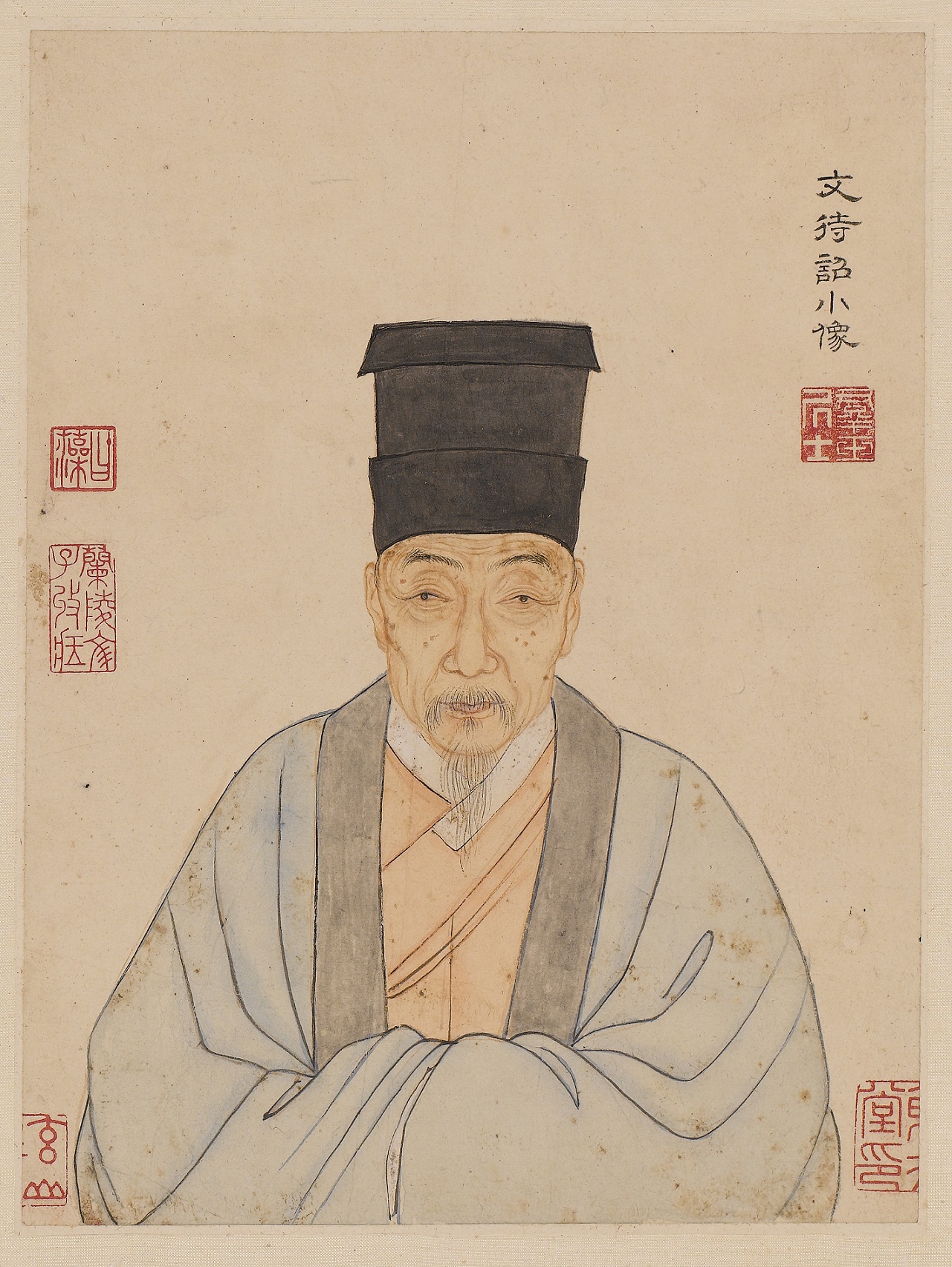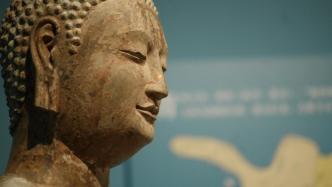

In 1996, more than 400 Buddhist statues from the Northern Wei Dynasty to the Northern Song Dynasty were unearthed at the site of Longxing Temple in Qingzhou (southern neighbor of Qingzhou Museum). "China's 100-year-old archaeological discoveries". This batch of Buddha statues has been exhibited in more than a dozen countries and regions, including China, Japan, Germany, Switzerland, the United Kingdom, and France, and is known as a major discovery that "rewrites the history of world art".
On July 1, "Smiling for a Thousand Years: Exhibition of Buddhist Statues at Longxing Temple in Qingzhou" was exhibited at the West Hall of Suzhou Museum. The Paper saw at the scene that more than 40 pieces of fine Buddhist statues and fragments of Longxing Temple in Qingzhou were selected for the exhibition, including back-screen statues and round Buddha and Bodhisattva statues. His eyes were downcast, and his expression was loving, as if he was telling the vicissitudes he had experienced in the past.

"Smiling Millennium: Exhibition of Buddhist Statues at Longxing Temple in Qingzhou" Note: The pictures in this article are all taken by The Paper journalists
"This is the most beautiful smile in the East, clear, peaceful, and serene, with an expression of insight into everything in the world." Xie Xiaoting, curator of Suzhou Museum, wrote in the preface of the exhibition, "In the hundreds of years since the founding of Buddhism, there was actually no There are no Buddha statues, and people use symbols such as Bodhi trees, Dharma wheels, and Buddha footprints to represent the existence of Buddha. Around the first century AD, the first Buddha statues were born. Around the same time, Buddhism gradually spread to China. Qingzhou was one of the centers where Buddhism spread at that time."
The name of Qingzhou comes from "Shangshu Yugong": "Haidai is Qingzhou", one of the ancient "Kyushu", roughly south of Bohai Sea and north of Mount Tai, occupying most of today's Shandong Province.
Qingzhou belonged to Nanyan in the late Sixteen Kingdoms period, then entered the territory of Eastern Jin Dynasty, and then belonged to Liu Song Dynasty. During the Northern Wei Dynasty, Qingzhou belonged to the Northern Dynasty from the Southern Dynasty. "Northern History" has the words "Taiyuan in Bingzhou, Qi County in Qingzhou, where the overlord dynasty is located, and the king's order is the foundation", which shows the importance of Qingzhou. It not only controls the north-south traffic arteries, but also the intersection of the Maritime Silk Road and the Land Silk Road, and naturally has the unique advantage of cultural integration. Such historical and geographical features have created unique conditions for the spread of Buddhism in Qingzhou.

Sikong Gong Qingzhou Inspector Linhuai Wang Statue Stele Inscribed Li Yongshu of Tang Dynasty The forehead of Longxing Temple
Longxing Temple started from the establishment of a Buddhist hall in the second year of Yuanjia (425) of the Liu Song Dynasty in the Southern Dynasty until it was converted into a Chenghuang Temple in the first year of Hongwu (1368) of the Ming Dynasty. The Jin and Yuan dynasties have a history of nearly a thousand years.
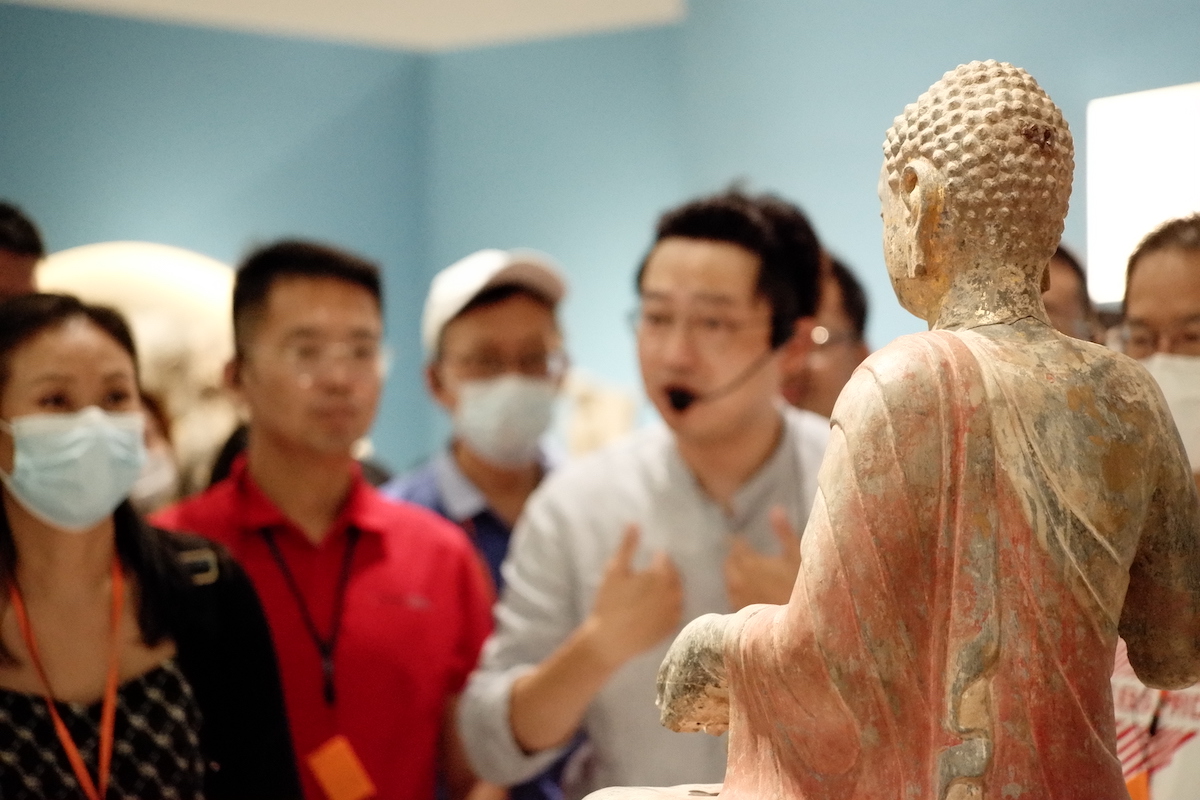
"Smiling Millennium: Exhibition of Buddhist Statues at Longxing Temple in Qingzhou"
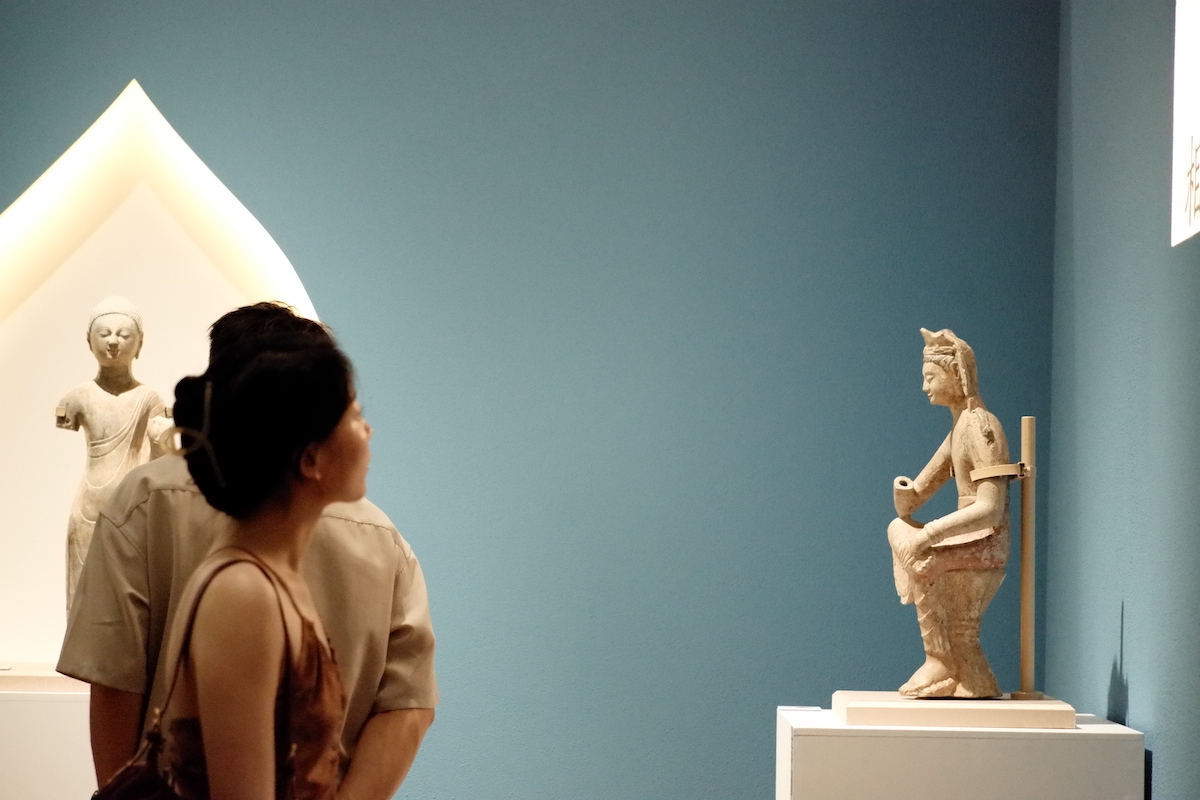
"Smiling Millennium: Exhibition of Buddhist Statues at Longxing Temple in Qingzhou"
"Since the Buddhist statues of Longxing Temple in Qingzhou came into being, they have attracted the attention of the world and attracted the attention of the whole world. In 2004, at the opening ceremony of the Sackler Art Museum in Washington, USA, the curator at that time, Raby, said that this It is the best exhibition he has ever held. Nearly a million spectators went to Sackler to visit and appreciate them. They were attracted by the ancient oriental painted sculpture art and mysterious Buddhist culture, and lingered in front of the exquisite and gorgeous Buddha statues. The exhibition made' Qingzhou' has become the focus of the world, and people pronounced 'qing-zhou' with a foreign accent." Xie Xiaoting wrote in the article.
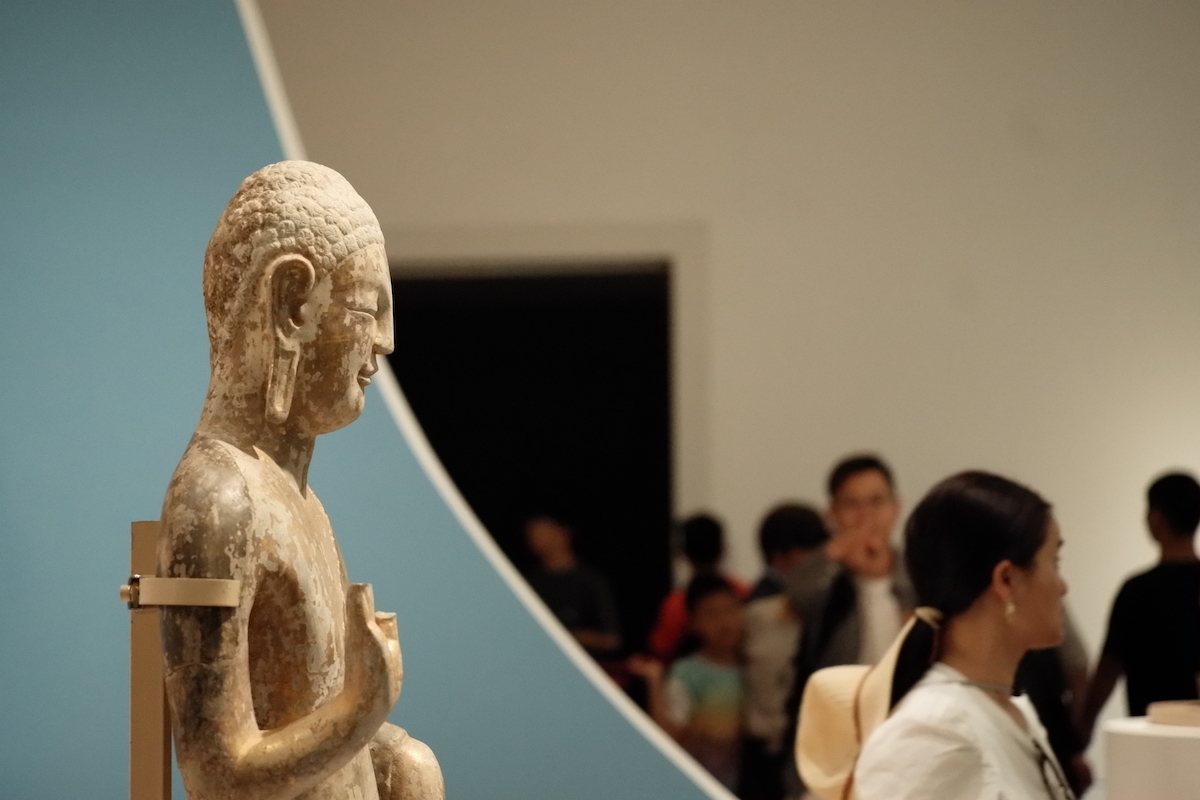
"Smiling Millennium: Exhibition of Buddhist Statues at Longxing Temple in Qingzhou"
The Paper reporter saw at the scene that the exhibition is divided into four units: "Hai Dai Wei Qingzhou", "Born Charm", "Exquisite Colors and Gold", and "Born from the Heart".
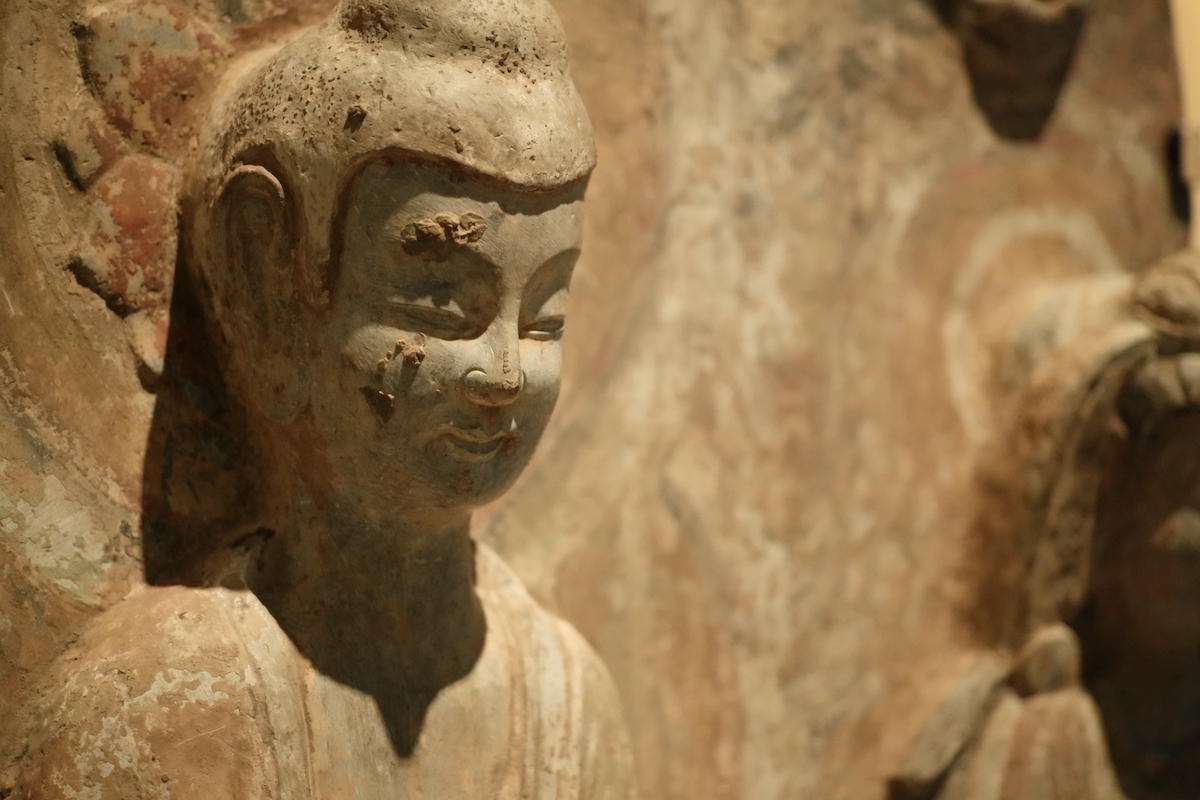
"Smiling Millennium: Exhibition of Buddhist Statues at Longxing Temple in Qingzhou"
"The exhibition starts from the mystery of burial, through the introduction of Qingzhou's historical and geographical evolution, statue art style and carving technology, leading the audience to understand Qingzhou and get closer to Qingzhou Buddhist statues. The exhibition is especially artistically displayed, allowing the audience to appreciate it closely , to feel the art of ancient Chinese Buddha statues.” Xu Xincheng, the content planner of this exhibition and the academic research department of Suzhou Museum, said on the spot.

"Smiling Millennium: Exhibition of Buddhist Statues at Longxing Temple in Qingzhou"
The earliest buddhist statues in Qingzhou are works from the late Northern Wei Dynasty to the Eastern Wei Dynasty. Most of them are statues with back screens. The appearance is handsome and elegant, and it is called "beautiful bone and clear image" and "boosting clothes and belts" in history.
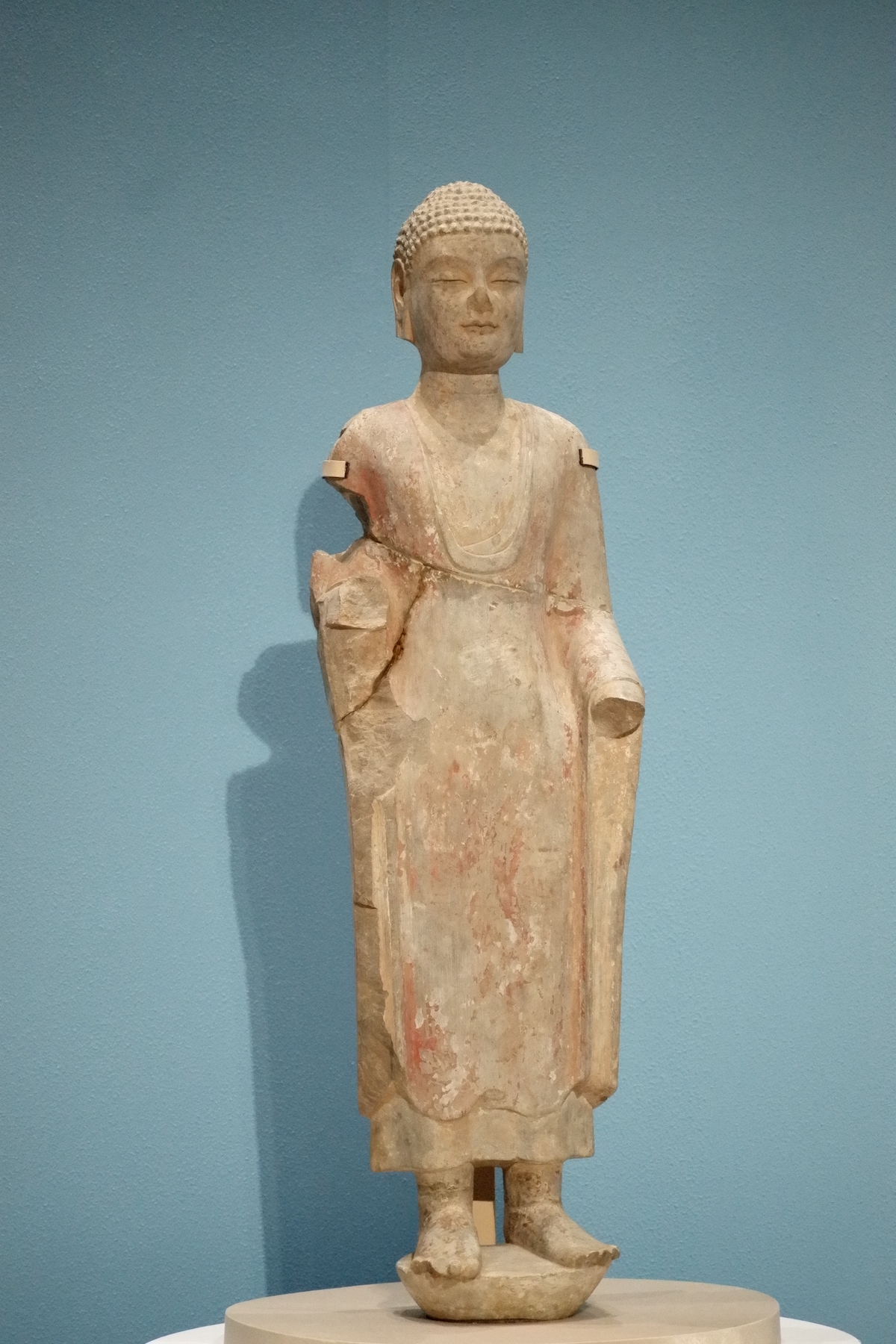
"Smiling Millennium: Exhibition of Buddhist Statues at Longxing Temple in Qingzhou"
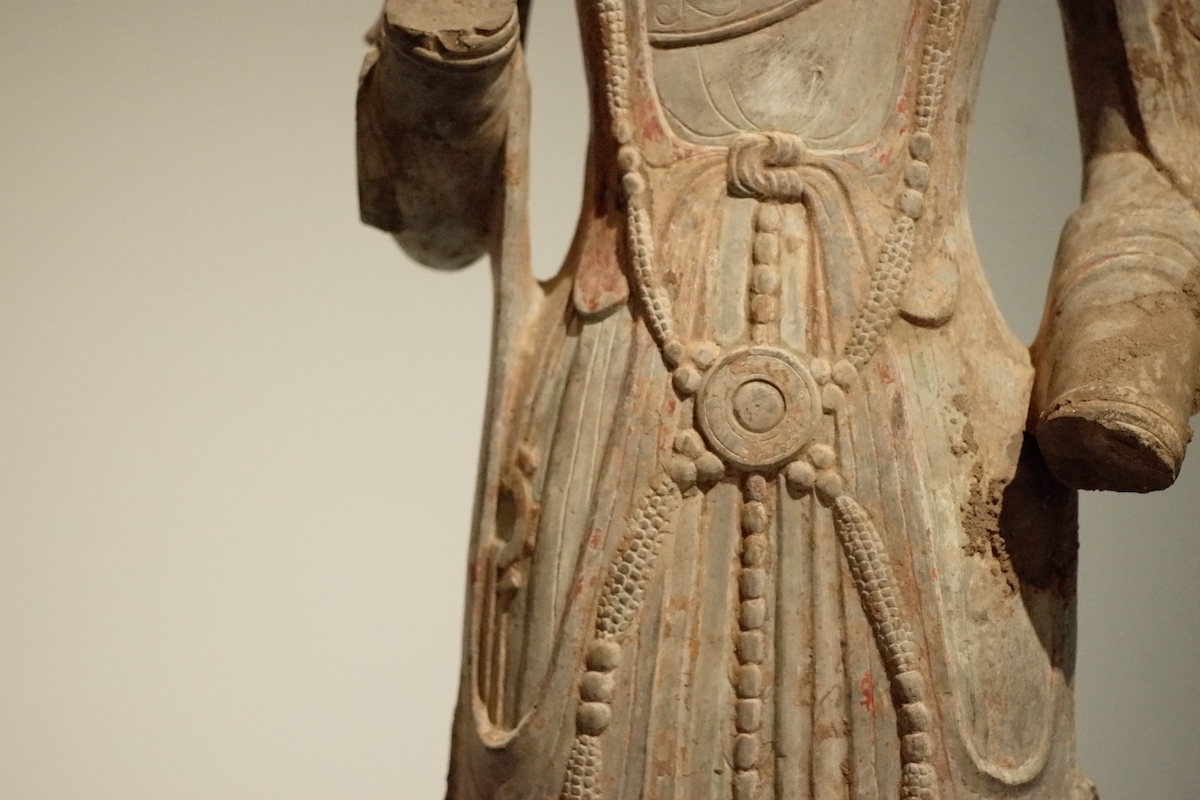
"Smiling Millennium: Exhibition of Buddhist Statues at Longxing Temple in Qingzhou"
"During the Northern Qi Dynasty, Buddhist statues at Longxing Temple in Qingzhou underwent significant changes in many aspects, mainly standing round statues. The Buddha clothes are light and close-fitting, with simple folds and textures, plump and round faces, broad shoulders and breasts, and a healthy and rich figure. Dynamic, depicting graceful charm, changing the solemn and solemn religious atmosphere of statues in other regions. Bodhisattva statues are full of gorgeous carvings, luxurious and elegant, and graceful. So far, the unique "Qingzhou style" of Buddhist statues has appeared, which is of great significance to the future of China. The art of Buddhist statues has had a profound impact." Xu Xincheng said.
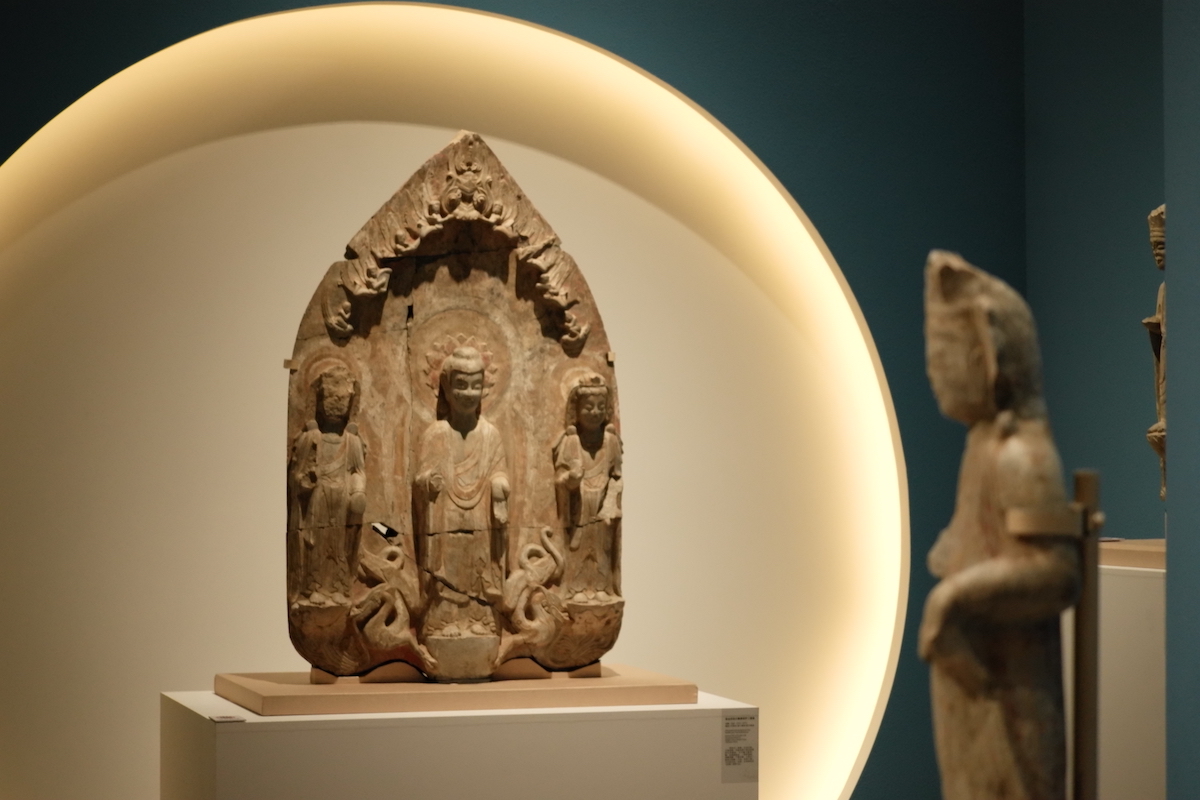
"Smiling Millennium: Exhibition of Buddhist Statues at Longxing Temple in Qingzhou"

"Smiling Millennium: Exhibition of Buddhist Statues at Longxing Temple in Qingzhou"
As for the source of "Qingzhou Style", Xu Xincheng's tour guide introduced that Qingzhou was once a territory of the Southern Dynasties and was ruled by the Eastern Jin Dynasty and Liu Song Dynasty for nearly 60 years. Not long after it belonged to the Northern Wei Dynasty, Emperor Xiaowen restructured it again, and was trying to imitate the regulations and cultural relics of the Southern Dynasty. The Buddhist statues from the late Northern Wei Dynasty to the Eastern Wei Dynasty in the Qingzhou area can be seen in the influence of the statues of the Southern Dynasties in the aspects of Buddha statues with snail hair, clothing, Bodhisattva crowns, and necklaces.
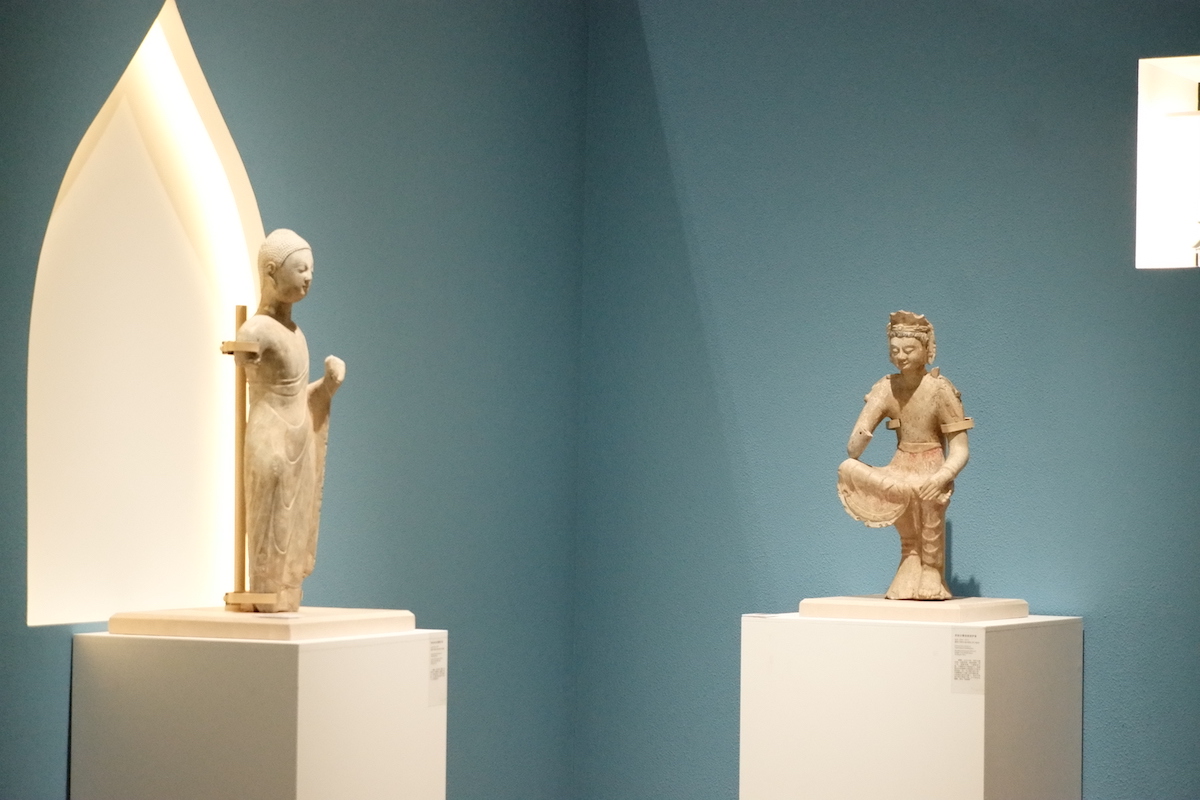
"Smiling Millennium: Exhibition of Buddhist Statues at Longxing Temple in Qingzhou"
"This style of statues is also related to the westward journey of the eminent monk Faxian in the Eastern Jin Dynasty." Xu Xincheng said that in the eighth year of Yixi in the Eastern Jin Dynasty (412), after more than ten years of traveling westward to seek the Dharma, the eminent monk Faxian returned to the east by boat from Qingzhou. He landed in Laoshan, Changguang County, and translated scriptures and preached in Qingzhou for one year. The frequent exchanges between Chinese and Indian monks has greatly promoted the cultural and artistic exchanges between China and India.

"Smiling Millennium: Exhibition of Buddhist Statues at Longxing Temple in Qingzhou"
"So after the Eastern Jin Dynasty, and since the Northern Qi Dynasty, the new style of Buddhist statues in Qingzhou was obviously influenced by the art of Indian Gupta statues. Since the 5th century AD, the Gupta Dynasty has formed two major Buddhist art centers, Motuluo and Sarnath. The clothing pattern of the Tuluo Buddha statue is U-shaped thin line, and the thin clothing is close to the body, as if soaked in water, vaguely protruding the outline of the whole body. The cassock of the Sarnath statue is like a 'naked' general, with only the collar, cuffs, A few traces of transparent clothing lines can be discerned on the edge of the hem."

"Smiling Millennium: Exhibition of Buddhist Statues at Longxing Temple in Qingzhou"
The Paper reporter also learned at the scene that more than 95% of the Buddhist statues in Longxing Temple in Qingzhou are carved from limestone produced locally in Qingzhou. The texture is fine, the hardness is moderate, and it is easy to carve. combined.
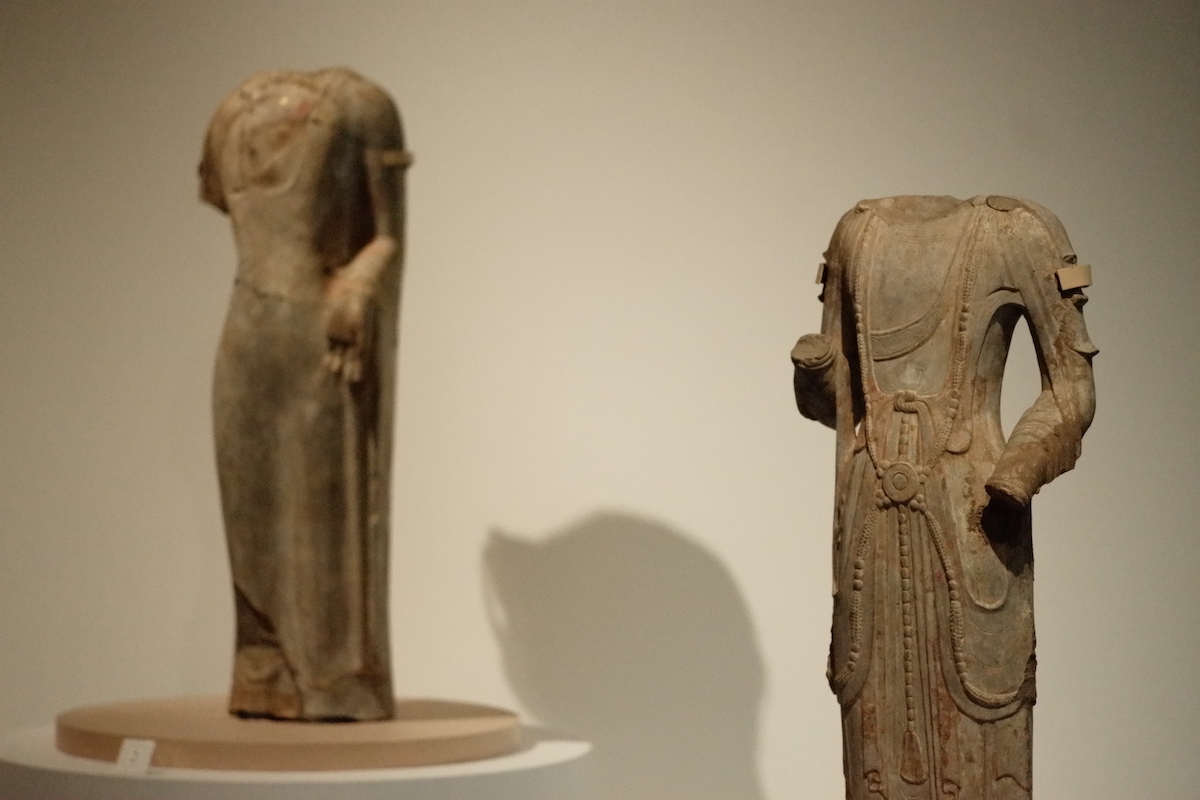
"Smiling Millennium: Exhibition of Buddhist Statues at Longxing Temple in Qingzhou"
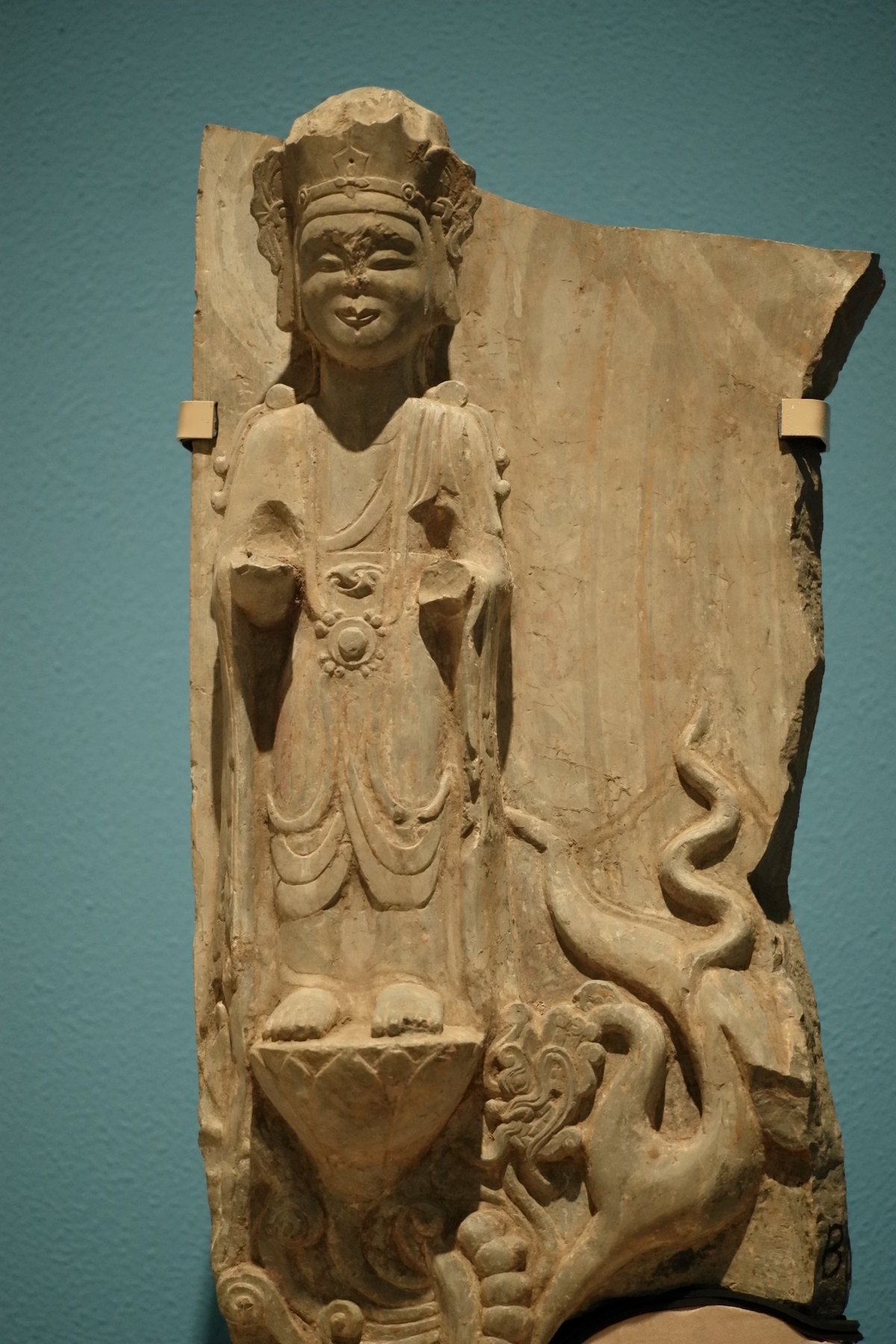
"Smiling Millennium: Exhibition of Buddhist Statues at Longxing Temple in Qingzhou"
Most of these Buddha statues retain their original painting and gilding. The colors of the paintings include natural mineral pigments such as cinnabar, sapphire blue, ocher, malachite green, black, and white. Some of the statues even have stories of characters painted in various colors on their bodies or clothing. The gold-pasted part is mainly the bare skin part of the Buddha statue. In addition, statues of Bodhisattvas, statues of supporters, flying apsaras, flame patterns, dragons, lotus, etc. are also gilded.
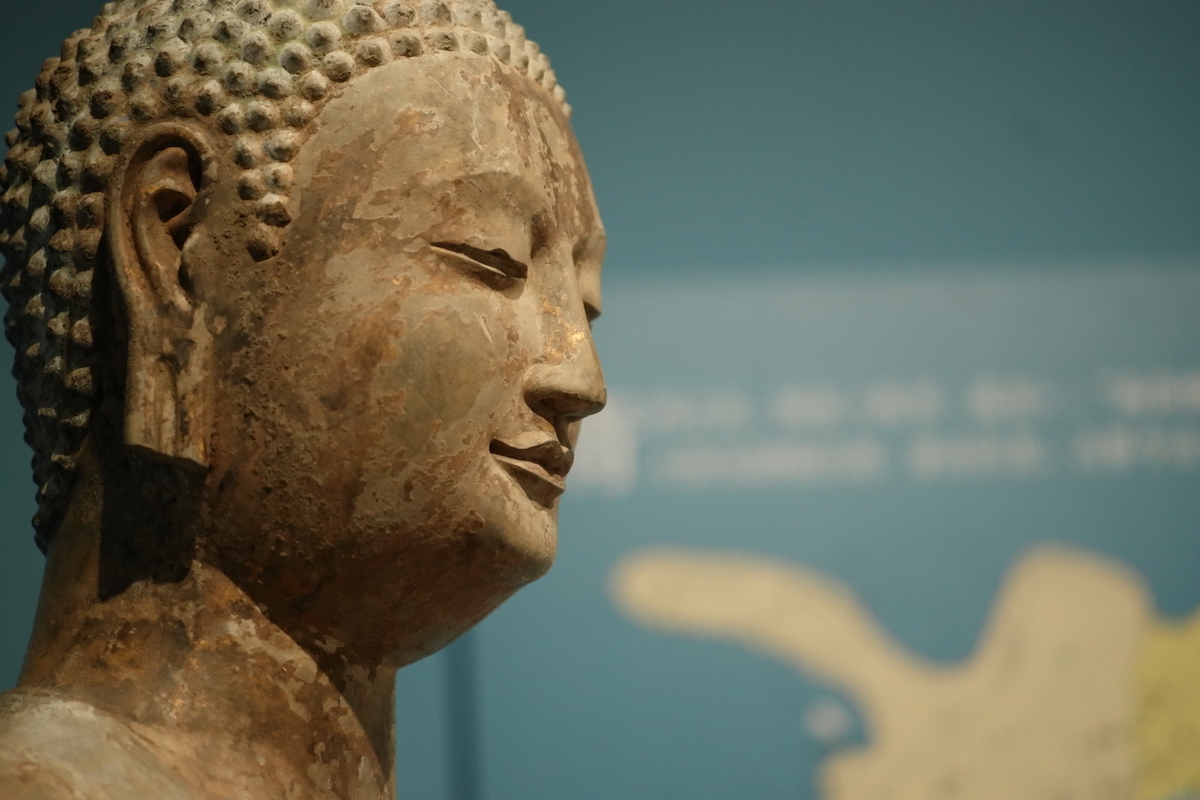
"Smiling Millennium: Exhibition of Buddhist Statues at Longxing Temple in Qingzhou"
What is puzzling is that there are many traces of restoration in the destroyed statues of Longxing Temple in Qingzhou, especially in many statues of the Northern Dynasties, the repaired holes and lead-tin alloys on the surface still remain. There are more than 80 pieces with obvious repair marks, accounting for about one-fifth of the total. "The stubble of these destroyed statues is different from old to new, indicating that they have been damaged at least twice. What caused the Buddha statues to be destroyed many times? What event finally caused the Buddha statues to be buried in the ground? Emperor Wu of the Zhou Dynasty built virtue and Dharma was difficult, Song Huizong advocating Taoism and abolishing Buddha, Song and Jin successive years of war, and the popular "dharma body relic buried" in recent years have been litigated. The truth of history can no longer be ascertained, but the quiet and peaceful smile of the Qingzhou Buddha statue has always faced the passage of thousands of years. "Xu Xincheng finally introduced.
It is reported that the exhibition is co-sponsored by Suzhou Museum and Qingzhou Museum, and the exhibition will last until October 8.


